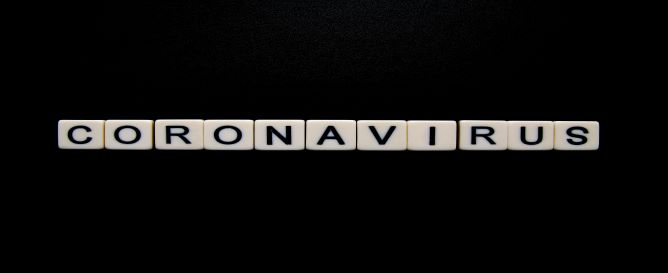Covid-19 – What It Is, And How Negative Pressure Sensors Help with Isolation Rooms

Understanding Refrigerated Trucks and Regulatory Temperature Compliance
October 10, 2019
How TempGenius Temperature Monitoring Sensors are Important for Vaccines
July 27, 2020
With Covid-19 spreading across the globe like a bushfire, it is no secret that many healthcare facilities worldwide are struggling with space issues. As such, they are being forced to come up with strategies on how to approach the space issue to help patients recover, and at the same time, avoid putting the first-responders at risk.
With most hospitals being full, dormitories and hotels are now being converted into intensive care units and airborne infection isolation rooms. And while healthcare engineers and architects are devising excellent ways to design code-compliant and safe isolation rooms, the issue of negative pressure is proving to be a tough nut to crack. But before we delve into this issue, let’s try to understand what Covid-19 is all about.
What Is Covid-19?
Covid-19 is a contagious and infectious disease that is caused by a new strain of coronavirus. The new virus is said to come from the same family of viruses with Severe Acute Respiratory Syndrome (SARS) and an array of other types of common colds. Patients infected with the coronavirus are likely to experience moderate to mild respiratory illness, including fever, shortness of breath, and cough. For older people and those with underlying health conditions, the disease can be fatal. The best way to slow down and prevent transmission is to be well informed about the causes, how it spreads, and how to stay safe.
Negative Pressure Isolation Rooms
Now let’s get back to our discussion. We mentioned before that negative pressure in isolation rooms is one of the challenging areas for healthcare professionals especially now that classrooms, dormitories, and hotel rooms are the new isolation zones. The primary goal of a negative pressure isolation room is to allow air inflow and not outflow. These help to keep the infectious disease contained in such places. Generally, creating negative pressure zones involves driving additional pressure into the isolation rooms using the HVAC system. Other techniques can be used to create negative pressure zones, but the fundamental issue here is how well you can monitor and measure the room pressure.
Reassessing Your Pressure System
As the Covid-19 continues to wreak havoc in various countries, many hospitals are reevaluating their ability to contain the spread now that the existing isolation rooms are overwhelmed. New temporary enclosures and non-specialized spaces are now being used as isolation areas. In the quest to meet the set standards and requirements, hospitals should take this opportunity to update their technology so that they can be able to measure and monitor parameters beyond pressure.
Nevertheless, measuring the pressure in an insolation room against the adjacent space or hallway helps guarantee that the isolation room is negative. Another thing that hospitals should seek to verify is whether the air change rate is sufficient. However, the bottom line is that differential pressure monitoring in isolation rooms is essential, especially now that the Covid-19 malady is multiplying at an alarming rate.
How Negative Pressure Sensors Help with Isolation Rooms
Unlike some years back, when room pressure was measured using a manometer, advancements in technology led to the development of high-end pressure monitoring systems. These enable you to get accurate and reliable differential pressure data in real-time. TempGenius is a renowned brand that boasts a series of pressure monitoring accessories geared to helping healthcare facilities attain negative pressure isolation rooms. Created using state-of-the-art technology and exceptional designs, TempGenius pressure sensors are accurate, reliable, and durable.
Our software devices leverage wireless connections such as Wi-Fi to upload their readings into the cloud and local servers. This allows healthcare facilities to access isolation rooms’ differential pressure data from any internet-ready device. With TempGenius proprietary monitoring sensors, hospitals can sign in into the cloud, access voluminous data records, look at calibration certificates, generate thorough reports, and be notified when isolation room pressure surpasses the recommended threshold.
Creating infrastructure management software is one-way healthcare organizations can design and develop a plan on how to create negative pressure isolation rooms in the wake of the Covid-19. The data derived from monitoring platforms can help an organization avoid making uncoordinated decisions that may lead to unexpected emergencies. Having the right software platforms at your disposal will help your organization create reliable isolation rooms that minimize the spread of infectious diseases instead of putting more people in danger.
Can Differential Pressure Monitoring Sensors Be Used in Temporarily Spaces
While spaces inside a hospital are designed to allow pumping of additional air and pressure, what happens when dealing with non-permanent structures? Though it might be a cumbersome task, it is still possible to still get the required air pressure even in temporary enclosures.
And as long as you can pull a room negative, any of TempGenius pressure monitoring sensors can be mounted on any structure or enclosure, even if it is temporary. Our monitoring package features a full set of differential monitoring tools that are sure to align with your unique needs. Also, if your isolation spaces need audible alarming, you can rest assured that this company has whatever you need.
TempGenius is Here to Help
Although healthcare facilities have always struggled to keep up with ever-evolving technology, the coronavirus outbreak has forced them now more than ever to think outside the box. The adoption of forward-thinking technologies has become a necessity rather than an option.
At TempGenius, we are an innovative company that designs advanced pressure monitoring software apps and products that can help healthcare facilities create more sustainable and safe isolation centers. We enable your organization to obtain reliable data by actively measuring pressure differences between a positive or negative buffer room. Call us today, and together we can help prevent the spread of this deadly disease and maintain sterile work environments.
